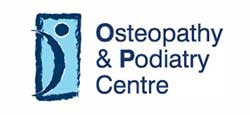Top Athletes Enhance Performance with Osteopathic Manipulative Treatment
CHICAGO, March 1, 2002-Olympic speed skater, Apolo Anton Ohno received osteopathic manipulative treatment (OMT) prior to last week’s 1,500 meter Short Track race in which he won the gold medal. After Ohno suffered a gash on his leg requiring stitches during a collision in a previous race, Lawrence Lavine, D.O., an osteopathic physician (D.O.) and Ohno’s personal physician from Tacoma, Wash., flew to Salt Lake City to assist U.S. team physicians in treating him.
Dr. Lavine, who is board certified in osteopathic manipulative medicine, explains that he used advanced forms of OMT to treat Ohno. “Basically, I used osteopathic manipulative medicine to release the injury pattern,” asserts Dr. Lavine. “By relieving structure and tissue restrictions, you allow the body to begin healing itself more rapidly.”
Developed by Dr. Andrew Taylor Still in 1874, osteopathic medicine is based on a philosophy that focuses on the unity of all body parts. He identified the musculoskeletal system as a key element of health. The type of care Dr. Lavine provides strongly reflects these principles. “When I treated Apolo, it was not a matter of dealing with just the leg, it was a matter of going through his entire body and cleaning out every bit of strain pattern,” contends Dr. Lavine. “The whole purpose of what we do is to restore the health, remove the strain and let the body heal itself.”
A study published in the Nov. 4, 1999 issue of the New England Journal of Medicine shows OMT to be an effective form of medical treatment. Patients who participated in the study, who received OMT, required significantly less medication and used less therapy, resulting in lower costs and fewer side effects.
Dr. Lavine points out that if you can enable the body to heal itself, there is less need for medication, which is beneficial to athletes like Ohno. “What I did was enable Ohno not to take anti-inflammatory drugs,” explains Dr. Lavine, “which was important in this case because any drug you put into an athlete at his level is going to slow him down.”
Ohno’s father, Yuki Ohno, describes his son’s recovery. “Sunday, when the treatment started, his leg was swollen and sore. On Monday he was still experiencing some pain,” he recalls, “but then by Tuesday, the pain was gone, there was no swelling and he started practice again.”
During the months leading up to the Games, Dr. Lavine worked intensively with Ohno. “Ohno originally came to me so I could relieve discomfort he was experiencing in his back and restore normal function,” recalls Dr. Lavine. Utilizing a variety of osteopathic manipulative treatments, Dr. Lavine focused on removing restrictions across Ohno’s entire body to help relieve his discomfort and restore normal function. “I don’t make him a great skater.” Dr. Lavine clarifies, “He makes himself a great skater. I just help to relieve the restrictions that block the full expression of his talent.”
Steven Karageanes, D.O., team physician for the Detroit Tigers, also recognizes the benefits that OMT offers athletes. “Manipulation is extremely beneficial to athletes because of the time constraints they have when healing,” says Dr. Karageanes, a sports medicine and orthopedic osteopathic specialist. “OMT helps to speed up recovery by restoring function faster, and also aids in diagnosis, as well.”
Per Gunnar Brolinson, D.O., a team physician for the U.S. Ski Team and a volunteer physician for the U.S. Olympic Committee, points out that athletes who do not suffer from specific injuries can also benefit from OMT. “An athlete having performance problems may have structural imbalances,” says Dr. Brolinson. “OMT can fix that. I’ve used it on skiers literally in between runs.”
Just as Dr. Brolinson treats skiers between runs, Dr. Lavine and the U.S. team physicians treated Ohno between races. As an osteopathic physician, Dr. Lavine stresses the importance of meeting the needs of the patient. “It’s definitely a team effort,” he recognizes. “It’s all of us working together in the best interest of the patient.”

